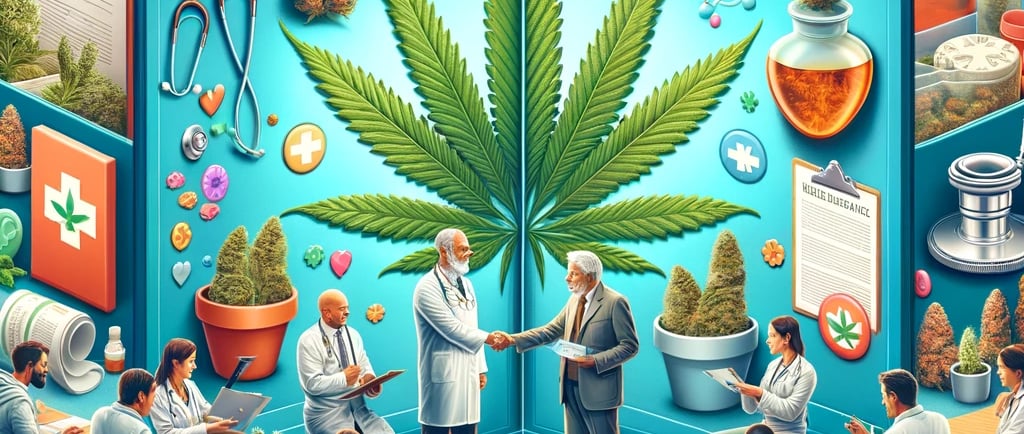Cannabis Clubs and the Medical Community: Bridging the Gap
The intersection of cannabis clubs and the medical community represents a pivotal shift in the perception and utilization of cannabis for medicinal purposes. As cannabis gains legal status in various jurisdictions, these clubs are increasingly becoming conduits for education, access, and advocacy in the realm of medical cannabis. This article explores how cannabis clubs are working alongside the medical community to bridge the gap between traditional healthcare and medicinal cannabis use.
CANNABIS CLUBS
3/31/20242 min read


The Role of Cannabis Clubs in Medicinal Use
Cannabis clubs, particularly in regions with legal medical cannabis programs, have begun to play a crucial role in patient care. They provide a secure source of high-quality cannabis for patients, often tailoring strains to specific medical conditions based on cannabinoid and terpene profiles. This personalized approach helps patients find the most effective treatment for their needs.
Collaboration with Healthcare Professionals
Some cannabis clubs are deepening their connections with the medical community by collaborating directly with healthcare professionals. These collaborations can take various forms, including:
Referral Programs: Doctors refer patients to trusted clubs where they can access medicinal cannabis.
Educational Workshops: Clubs host workshops and seminars led by medical professionals to educate patients on safe and effective cannabis use.
Research Partnerships: Clubs participate in research studies, contributing valuable data on cannabis efficacy and patient outcomes.
Navigating Legal and Ethical Boundaries
The collaboration between cannabis clubs and the medical community is not without its challenges. Legal restrictions on cannabis use, even for medicinal purposes, can vary significantly between regions, complicating access for patients and the ability of healthcare professionals to prescribe or recommend cannabis. Ethical considerations also play a role, with some practitioners hesitant to engage with cannabis due to historical stigmas or a lack of standardized dosing guidelines.
Patient Advocacy and Support
Beyond providing access to cannabis, clubs act as advocates for patient rights and champions of medicinal cannabis within the broader healthcare landscape. They push for legal reforms that improve patient access, work to destigmatize medicinal cannabis use, and provide support networks for patients navigating the complexities of medical cannabis treatment.
Future Directions
The future of the relationship between cannabis clubs and the medical community looks promising. With ongoing research clarifying the medicinal benefits of cannabis and legal landscapes evolving to support medicinal use, collaborations are likely to become more formalized and integrated into mainstream healthcare. This could lead to more standardized approaches to medicinal cannabis treatment and a greater understanding and acceptance of cannabis as a valuable tool in patient care.
Conclusion
Cannabis clubs are increasingly becoming key players in the realm of medicinal cannabis, bridging the gap between traditional healthcare and alternative treatment options. By collaborating with the medical community, navigating legal and ethical challenges, and advocating for patient rights, these clubs are helping to shape a future where cannabis is recognized and utilized for its therapeutic potential.
